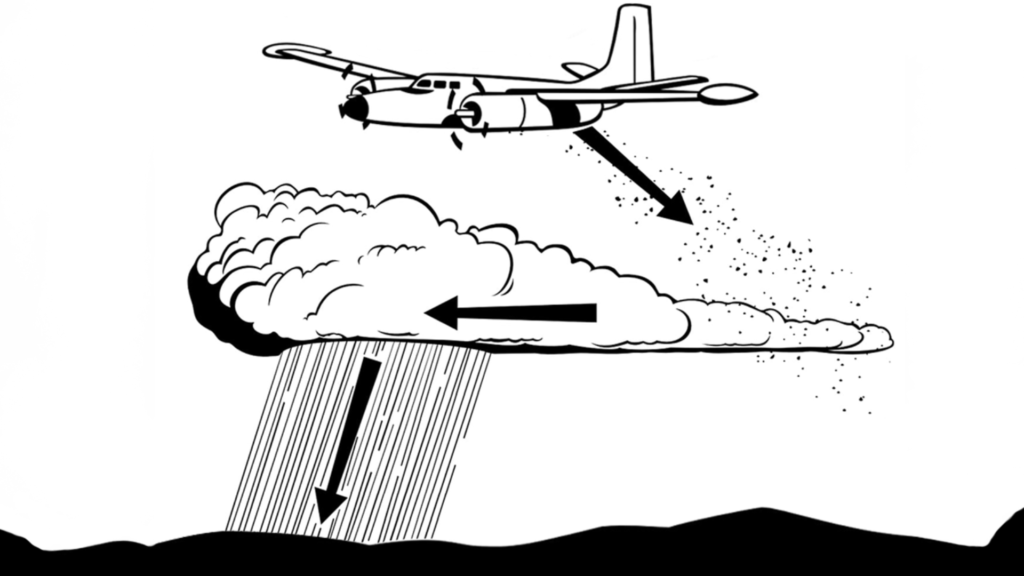Cloud Seeding, is an artificial phenomenon to cause chemically induced rain. It is a weather modification process using dry ice (carbon-di-oxide), silver iodide, potassium iodide liquid propane, or aerosols performed. It is the alternative way to increase precipitation in drought-prone areas by spreading chemicals with the help of a plane, rocket, or an earth-based generator and forming artificial clouds which ultimately results in rainfall and air quality improvement.
The global use of cloud seeding technology has been seen since 1946. In India, it was pioneered by TATA Firm in 1951 which was later researched and modified as part of various research projects taken by different Indian Institute of Technology (IITs) across the country such as IIT Madras in collaboration with state meteorology authorities to address the issues of changing precipitation patterns due to climate change.
The recent successful test flight for the cloud seeding project of IIT Kanpur after the approval of DGCA has also given lots of hope to the state to achieve a low cost-effective solution to increase agricultural productivity in its drought-prone areas like Bundelkhand. These ongoing successful test efforts are making way for effective draught management in India and progress towards food security. For its vast population.
But, in the global space the phenomena is not only used to address drought situations, it has been increasingly promoted to create a perfect rain-free day for important events as part of the luxury such as the use of artificial clouds during the royal wedding in Britain in 2012 as well as in the opening and closing ceremonies of Beijing Olympics in 2008.
The increasing use of chemical-induced cloud seeding also brings many evil effects on humans, animals, environment, and thus impacts the planet as a whole. This disturbs the regular phenomenon, the aerosol as a residue from the artificial precipitation contributes to an increase in GHG emissions.
Thus, to find solutions to address the concerns with the use of cloud seeding technology, still more research is needed. This will help in developing advanced technology in the area that can sustainably address the drought management issue while minimizing the negative impact on the planet.

